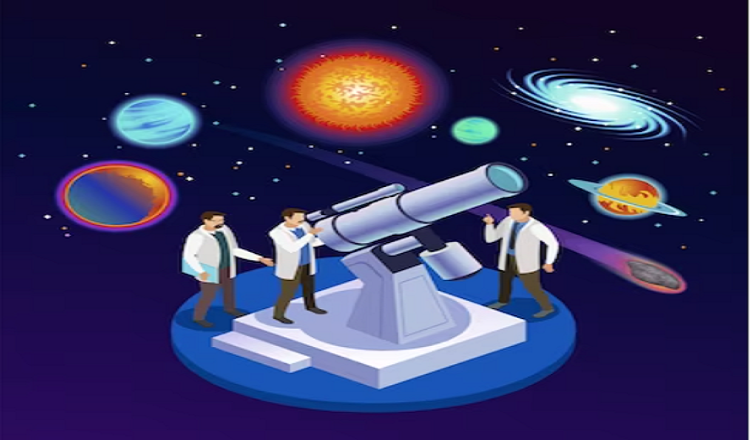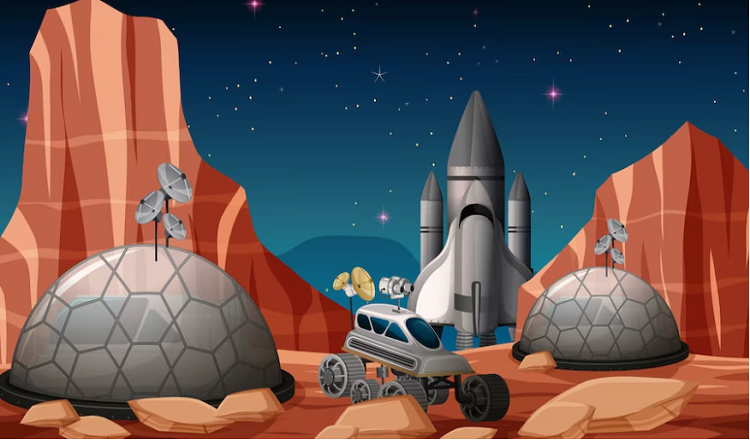For many years, space travel has caught our interest. Our interest in the cosmos has grown since the 1957 launch of Sputnik and has continued with more recent Mars rover missions. The Russian space organisation ROSCOSMOS, which is in charge of many of the greatest feats in space history, is at the forefront of this research. However, what part does ROSCOSMOS play in the current space competition, particularly in the US?
Since its founding in 1992, ROSCOSMOS has played a crucial role in the space industry, having inherited a significant amount of technology and knowledge from the Soviet space programme. ROSCOSMOS has been at the vanguard of space exploration for more than 50 years, from putting the first satellite into orbit around the Earth to sending the first person into space. However, ROSCOSMOS continues to innovate and push the limits of what is feasible in orbit, thus its contributions to the space race are not confined to earlier successes.
It is impossible to exaggerate the importance of ROSCOSMOS’ contributions to the space race. ROSCOSMOS has made significant scientific advances and made it possible for the International Space Station to operate successfully thanks to its cutting-edge technology and know-how. Numerous cooperative missions and ground-breaking discoveries have resulted from its collaboration with NASA and other international space organisations. This blog will explore how ROSCOSMOS is still making a big difference in the space race, especially in the USA, as well as what the future holds for this trailblazing space organisation.
The function of ROSCOSMOS on the International Space Station
The International Space Station (ISS), the largest man-made structure in space and the result of cooperation between several space agencies, is developed and run in great part thanks to ROSCOSMOS. The ISS is dependent on ROSCOSMOS for essential resources including launchers, crew transportation, and maintenance supplies. Living quarters, labs, and a docking port are among the crucial elements found in the ROSCOSMOS-launched Russian part of the International Space Station (ISS).
ROSCOSMOS has made important scientific contributions to the ISS programme in addition to logistical services. Numerous experiments carried out by Russian cosmonauts in the areas of biology, physics, and materials science have resulted in significant discoveries and improvements in our understanding of the cosmos. Our understanding of space has increased thanks to ROSCOSMOS’ contributions to the ISS programme, which have also boosted international cooperation in space exploration.
NASA’s collaboration with ROSCOSMOS
In the space industry, ROSCOSMOS and NASA have a long-standing collaboration, collaborating on numerous projects and missions to advance our understanding of space. The International Space Station (ISS), which is shared by NASA, ROSCOSMOS, and other international partners, is one of the main areas of cooperation between the two organisations.
In addition, NASA and ROSCOSMOS have collaborated on missions to study other regions of the solar system, like the Mars Exploration Programme. The two organisations have also worked together on Earth observation missions to research climate change and natural disasters from orbit. Along with advancing our knowledge of space, these collaborative initiatives and missions have improved diplomatic ties between the US and Russia.
The contribution of ROSCOSMOS to space exploration
For more than 50 years, ROSCOSMOS has led the way in space exploration, making significant discoveries that have increased our understanding of the cosmos. One of its major achievements has been the creation of rockets and satellites, which have facilitated important scientific advancements. Soyuz and Proton rockets, two of ROSCOSMOS’ launchers, have proven crucial in launching satellites and other spacecraft into orbit.
Among ROSCOSMOS’ noteworthy accomplishments in the realm of space exploration are the placement of the first satellite in orbit, the launch of the first astronaut, and the execution of the first spacewalk. The agency’s robotic probes have successfully landed on Venus and travelled through Mars. Recent developments in space exploration, including as the functioning of the International Space Station and cooperative missions to investigate Mars and other celestial bodies, are a result of ROSCOSMOS’ partnership with NASA and other international partners.
Challenges facing ROSCOSMOS in the space race
ROSCOSMOS has made a lot of progress in space exploration, but there are still a lot of obstacles to overcome in the ongoing race for space. Competition from other space organisations, especially those in the United States and China, is one of the main obstacles. These agencies are strengthening their position in the global space sector by increased investments in space technology and exploration.
ROSCOSMOS is concentrating on creating new technologies and increasing worldwide cooperation to get over these obstacles. To enhance its capabilities, the agency is investing in new satellites and launch vehicles. It is also looking at new space exploration strategies, including as deep space missions and space tourism. In order to exchange knowledge and resources and to actively promote international collaboration in space research, ROSCOSMOS also collaborates with other nations and private businesses. ROSCOSMOS strives to keep its place as a pioneer in space exploration by adjusting to the rapidly evolving space sector.
Impact of ROSCOSMOS on Space Exploration in the Future
The space exploration industry will change significantly as a result of ROSCOSMOS’ contributions to the space race, both in the United States and internationally. Future missions to explore our solar system and beyond have been made possible thanks to the agency’s ongoing development of cutting-edge launch vehicles and spacecraft.
The creation of a new generation of human spacecraft, which will allow future expeditions to the Moon and Mars, is one of the major future projects in which ROSCOSMOS is involved. The organisation is also focusing on cutting-edge asteroid mining and nuclear-powered propulsion systems for deep space exploration. ROSCOSMOS is well-positioned to play a significant role in influencing the direction of space exploration in the years to come thanks to its ongoing investments in space technology and exploration.
Conclusion
To sum up, ROSCOSMOS’ contributions to the space race have been essential in furthering our knowledge of the cosmos and extending the limits of space travel. ROSCOSMOS has made significant contributions to the history of space exploration, from the launch of the first satellite and the placement of the first astronaut in orbit through the creation of state-of-the-art launchers and spacecraft.
Additionally, the agency’s continuous participation in international alliances and collaborations has made it feasible for combined efforts to carry out objectives that would have been impossible for any one nation or agency to accomplish alone. The power of international collaboration in space exploration is demonstrated, for example, by ROSCOSMOS’ partnership with NASA in the management of the International Space Station.
The contributions and accomplishments of ROSCOSMOS will continue to be important as we move towards the future of space exploration. With continuing initiatives including the creation of brand-new spacecraft and technology for deep space travel, ROSCOSMOS is prepared to significantly advance our knowledge of the cosmos. In the end, ROSCOSMOS’ contribution to the space race has been and will remain crucial in furthering human understanding and opening up new horizons.
Read More You May Like:











